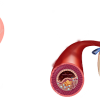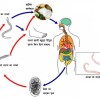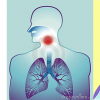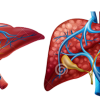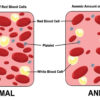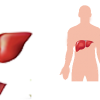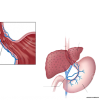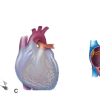Tag: anemia , chills , Fever , infectious disease , liver , mosquito , parasite infection , red blood cell , spleen , weakness
-
Appendicitis
Appendicitis is the inflammation of the appendix. Appendix is a small, finger-shaped tubular structure attached to the large intestine located at the right side of lower abdomen. There is no known function of appendix in human body. When infected with bacteria or due to the blockage, the appendix gradually swells and g
-
Fever
Definition A fever or pyrexia is a rise in body temperature above normal and often indicates an illness. Average normal body temperature is 98.6oF but it can range between 97 and 99.5
-
Blood Cancer (Leukemia)
Introduction Blood cancer encompasses cancers that originate in the bone marrow (organ that produces blood cells). Most of the blood cancers involve white blood cells (cells that fight infection) and are called leukemia. Cancers can also develop in the red blood cells (cells that carry oxygen) and p
-
Cough
Cough is our body’s protective response to the presence of irritants in the airway. It is a reflex action caused by the stimulation of the nerve endings in the respiratory tract by stimuli such as allergen, microbes, foreign body or excessive mucous. After the stimuli reaches the bra
-
Black stools
Black stools can be due to bleeding in gastrointestinal (GI) tract or ingestion of certain medications (iron, bismuth) or certain food (blueberries). Black, tarry, sticky and smelly stool is caused by bleeding in the GI tract, and is known as melena. Malena is a serious medical
-
Pneumonia
Pneumonia is an infection of the lungs caused by a variety of germs. These germs reach the air sacs (lowest part of airways) after inhalation, overcoming body's normal defense mechanism like nasal hairs, mucus and cough which are weakened by smoking or dust inhalation. Once in the lungs,
-
Tuberculosis
Tuberculosis (TB) is a communicable disease caused by Mycobacterium tuberculosis. It can affect any organ in the body but lungs (Pulmonary TB) are the most common site of infection. Other common sites of infection are bones, lymph nodes, kidneys, uterus, brain (meninges), skin, etc. Tuberculosis i
-
Acute Kidney Failure
Kidney failure means the kidneys become unable to filter the blood and remove waste and excess salt and water from body. Kidney failure can occur acutely over hours and days or develop gradually over a period. When kidney stops working abruptly, it is called acute kidney failure (injury) . When kidney function
-
Ascariasis
Ascariasis is infestation of humans intestine by roundworm (Ascaris lumbricoides). The roundworm may reside in the guts for 6 to 24 months. The eggs are passed into the stool and under warm, shady, moist conditions they can survive for up to 10 years. The infection is transmitted by in
-
Fatigue / Tiredness
Tiredness means you feel exhausted both during activity as well as rest,, even while sleeping as well. It is not a disease but could be a symptom of various physical and psychological ailments. It can alternatively be called as fatigue; exhaustion; lethargy or weariness. We all
-
Sore Throat
Sore throat (Pharyngitis & Tonsillitis) refers to pain, irritation or itchiness of the throat resulting from inflammation of the lining of throat and tonsils. It is common infection in children, but can affect people of any age. Symptoms include dryness of throat, swollen glands in
-
Vomiting of blood (Hematemesis)
Hematemesis refers to the presence of blood in your vomit or vomiting of pure blood that originates in upper part of your gastrointestinal tract. It needs to be differentiated from spitting blood mixed saliva which arises from teeth, mouth and throat. It also need to be differentiated
-
Red Eye
When the white part of eyes appears red, it is called a red eye. It is caused by dilatation of local blood vessels due to inflammation usually from either infection or irritation. Red eye can be a manifestation of local eye pathology or a sign of systemic disease. Red e
-
Menstrual Irregularities
Menstrual abnormalities include irregular menstrual cycle, heavy bleeding and painful menstruation. Irregular menses denotes variation in the length of a menstrual cycle. A menstrual cycle is the period between the first day of bleeding of one cycle to the onset of next period of bleeding. A normal menstrual
-
Systemic Lupus Erythematosus (Lupus)
Systemic lupus erythematosus (SLE) is a disease of immune system that can affect many organs in the body. Normally, the immune system produces proteins directed against infectious agents and protects us from infection. In SLE, however, your body produces antibodies that attack body’s o
-
Malaria
Malaria is a febrile, mosquito-borne disease caused by parasitic protozoa, Plasmodium. Four different species of Plasmodium cause malaria. The parasite is transmitted by bite of female Anopheles mosquito. It occurs mostly in high temperature areas - tropical regions and the Terai belt of Nepal. Infected female Anoph
-
HIV/AIDS
Introduction HIV (Human Immunodeficiency Virus) is the virus that causes AIDS (Acquired Immunodeficiency Syndrome). Infection by HIV weakens your immune system. When the immune system becomes too weak to fight, organisms that would otherwise not cause an infection in a normal person, that person is
-
Heart Failure
Heart failure means your heart is not able to pump out sufficient amount of blood into the rest of the body. It does not mean that your heart has stopped to beat which is called “cardiac arrest” (see Heart Attack for more informat
-
Diarrhea
Diarrhea is defined as increased frequency of defection (more than 3 per day) with excessive or abnormally loose consistency. Stool weights more than 200g/day are sometimes used to define diarrhoea but in the absence of abnormal consistency, weight alone is not an ideal indicator as bowel weight is influenced by high f
-
Cirrhosis of Liver
Liver cirrhosis is a chronic slowly progressive condition where normal liver tissue is replaced by scar tissue. The scar tissue is the final result of injuries to the liver by various substances. The destruction of normal liver tissue leads to reduced synthesis of proteins needed for the
-
Anemia
Anemia Anemia is a condition where your hemoglobin level is low. Hemoglobin is the substance found in the red blood cell that carries oxygen in the blood. When you are anemic the oxygen carrying capacity of you blood in reduced and it may not be enough to meet the dem
-
Hepatitis
Hepatitis is an inflammation of the liver. Liver is one of vital organs and largest internal solid organ. Liver has large blood supply and functions as a chemical factory removing many unwanted substances from the body. This exposes liver to many insults including infections, drugs or
-
Esophageal Varices
Esophageal varices are abnormally swollen veins in the lining of the lower esophagus. Most of the time, esophageal varices develop due to obstruction in the portal venous circulation (blood flow through the liver) but mainly it occurs when a healt
-
Diphtheria
Diphtheria is an infectious disease caused by bacteria Corynebacterium diphtheriae. The infection affects the respiratory passage leading to sore throat and breathing difficulties. The disease produces a
-
Atrial Fibrillation (AF)
Atrial Fibrillation (AF) is a disorder of heart rhythm that manifests as an irregular heartbeat. Usually, it is associated with rapid heart rate ranging from 100 to 170 beats per minute. But you can have atrial fibrillation with normal heart rate specially if you are treated with med
-
Amoebiasis/Giardiasis
Amoebiasis is an infection of gastrointestinal tract caused by an intestinal parasite called Entamoeba histolytica. It causes dysentery, liver abscess and rarely affects lungs, heart and brain. It occurs everywhere in the world but especially in the areas where there is poor sanitation and poor socioeconomic status. Th
-
Jaundice
Jaundice is a condition in which your skin and eyes turn yellow due to high levels of bilirubin in the blood. Bilirubin is a yellow pigment that is normally produced in our body when old red blood cells die. These pigments are then metabolised by the liver and excreted into the intesti
-
Hookworm Infestation
Hookworm infestation is a parasitic disease of humans caused by one of the two organisms- Ancylostoma duodenale and Necator americanus. It is the second most common helminthic infection in developing world. Hookworms are found in soil contaminated by human feces. The transmission of infection occurs when the following









